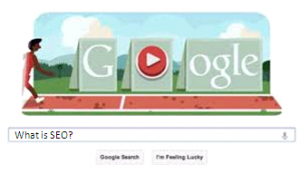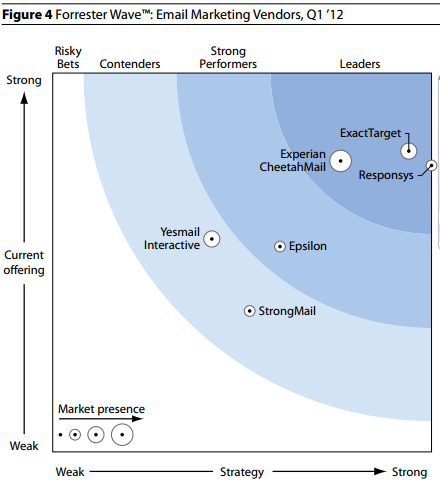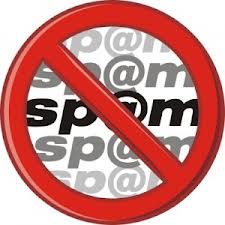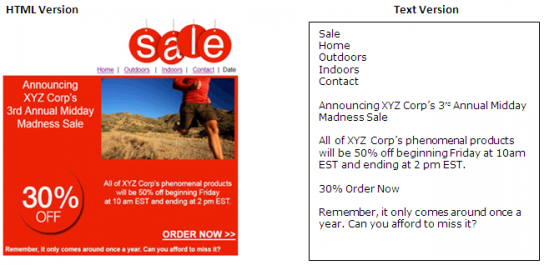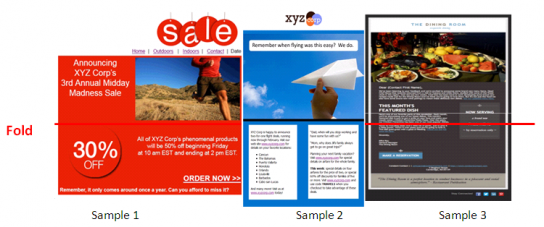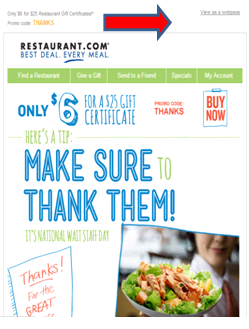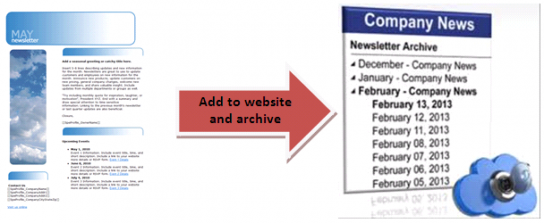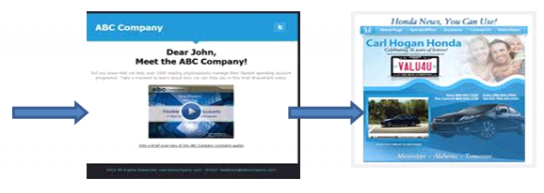Understanding the Relationship Between SEO and Email Marketing
June 27, 2013With the emergence of different marketing channels such as social media, direct mail, online advertising, telemarketing, sales, database marketing, and search marketing, email marketing is one of the oldest methods of digital communication, yet one of the most powerful in connecting and engaging with your customers and potential customers. In-house marketers rate Email Marketing and SEO out of all their top channels, with email marketing taking the lead for ROI, according to a study done by Marketing Charts.
Coming into the world of search marketing with an email marketing background, I have to say my learnings of the functionalities for both Email and SEO in regards to the goals, tasks, strategy and execution are parallel. In email marketing, you rely on an internal Executive/Marketing team to execute and create each campaign to help drive conversion on the website, create engagement, build brand awareness and increase sales for your company. With SEO, your recommendations’ effectiveness relies on the ability of your clients or your own IT team, design team, and partner agencies to work together to implement them. Regardless of who you rely on to properly execute, whether it’s email or SEO, they both lead to the same goal.
Email Marketing and SEO work in conjunction to drive visitors to your website, ultimately converting the traffic from those visits into sales, regardless of the industry. If Email Marketing and SEO are top channels for ROI, then how can businesses effectively combine them to attract the right audience? Well let’s take a look at some tips on the two!
Email Marketing
Email marketing is the most cost effective channel that business owners and marketers use to promote, reach, engage, acquire, retain, maintain and build relationships with customers or potential customers. As your customers and potential customers opt-in to receive your emails, whether it is newsletters, promotions, exclusive offers, guides, or articles, try to gather more information about them so you can provide targeted content they will find compelling, useful, or entertaining. Your readers will look to you as an industry thought leader which will help build up credibility for your targeted market.
Writing compelling content within the body of your message is very important, keeping in mind to add keyphrases pertaining to your business to help increase open and click through rates. In addition, develop a clickable call to action for valuable information on each campaign, along with creating effective subject lines and links to your website pages. The more effective your emails are, the more engaged customers and prospects are to what you have to say.
Search Engine Optimization (SEO)
SEO techniques help to get your website ranking in the search engine results pages higher than competition in response to a search query. There are many factors that determine search engine rankings, including a search engine’s ability to crawl a website. After each page is crawled, the pages are indexed into a mass database.
As search engines are continuing to crawl your website for new pages and content, the key factor in both Email Marketing and SEO is content. You need good content for each site landing page with targeted keyphrases. You also need good content in email campaigns / articles / newsletters to keep the reader opening your emails and you gain visibility by providing compelling content. It’s important to create unique crawlable content utilizing keyphrases, so your site ranks higher in the search engines and visitors come to your website through keyword searches. Consider repurposing content from your website throughout blogs, social media, and whitepapers. Writing good content and adding more unique crawlable content utilizing keyphrases describing what’s on your page and product will help users to find what they are looking for on your site.
Email Marketing Optimization Tips:
- Email Service Provider: Invest in and select a good Email Service Provider (ESP) that you can partner with to provide you with a dedicated IP address, reporting and the ability to monitor delivery, clicks, and bounce rates, and provide help managing relationships between the Internet Service Providers (ISPs) like Google, Comcast and Yahoo, etc.
If you are not sure who to select or need more information on ESPs, refer to the Forrester Research Wave Email Marketing Report detailing how email service providers measure up to one another.
Some of the top ranking ESPs are ExactTarget, Responsys, Experian, and Epsilon.
The right ESP can make a major difference and impact on your overall email marketing efforts.
- Follow the CAN-SPAM Law: It’s important to be CAN-SPAM compliant, maintain good list hygiene and have an opted-in or double opt-in customer and prospect list so you can build credibility with ISPs (Internet Service Providers). If you do not follow the normal email standard guidelines this will affect the deliverability rates of your messages being delivered to inboxes, and in extreme cases can lead to your company being blacklisted (i.e. no ability to send emails). If your company is blacklisted by an ISP, it can take anywhere from 24 hours up to 1 week to remove.
Requirements for email templates include: clearly stating the company name and mailing address, as well as providing recipients with an “unsubscribe” or opt-out link along with a link to the company privacy policy.
With SEO, there is link spam in which Google will lower site rankings for websites with spam links and negative SEO. Just like with email IPs, websites need to also build credibility with Internet Service Providers and with the search engines to build authority in rankings. Businesses must be sure to not follow any “black hat SEO” to improve your site’s performance in the search engines’ rankings.
- Create a Text Version Email: Ensure you always create a text-only version with HTML emails. There are a number of email users who opt to view their messages as text only so the video and images you have in the fancier HTML version will not be seen by the text only recipients. Also, depending on the type of mobile devices they are using, having text version emails will load faster. All the major ESPs have this feature to convert HTML to text, some may not be automated but some of them are automated to easily convert HTML to text. Also, keep in mind that not having a text version increases the chance of emails going into SPAM.
Here is a sample of HTML email versus text only email:
- Nurture Your Leads: Start by delivering “non-promotional” subtle messages leading into triggered emails to draw your potential customers to your brand, offerings and / or services gradually. Don’t start emailing them your current promotions or offerings, as it will likely turn into an “opt out” by the recipient based on what your messaging entails as you need to build credibility with them first.
- Landing Pages: Develop landing pages specifically for the product, services, promotion,or contest listed in the email– add targeted “keywords” pertaining to your industry or products to those landing page by adding a sign up form and/or call to action.
- Personalization & Content: Add personalization into email messages with the first name of the intended recipient with the specific topic they are interested in focusing on. Personalizing your email messages with valuable and useful information helps create engagement. Content messaging should be no longer than 400 words to help with open and click through rates. You don’t need to tell a story as emails really are notifications and should be kept short.
Calls to action and any important information to entice recipients to click or learn more should be “above the fold” for all emails.
Sample 1: Adding a company name to an email that has a call to action (Order Now) that leads directly to website
Sample 2 and 3: Adding personalization by using the recipient’s name and selecting lists by criteria as selected in email preferences (e.g., if interested in specific deals to destinations or featured deals).
Use keywords that pertain to your business in the content of the email along with your website. For example, if your site is about “Travel”, related terms (travel destinations, air specials, hotels, cruises) should be used within your content for each page, newsletter, emails, descriptive meta tags, titles, etc. If a certain keyword brings a large amount of relevant organic visitors to your website, add those keywords into your email marketing campaigns.
If you have Google Analytics installed on your site, you can easily view a list of the top keywords currently bringing organic search traffic to your website. View the Traffic Sources > Search report and drill down to the Organic traffic to show the top keywords by visit going to your pages. You can also use Google’s keyword tool to help you get ideas for popular keywords and keyphrases to use in creating content that users are searching for.
- Segmentation and List Growth: You can tailor email campaigns effectively to target demographics, interests or preferences with list segmentation by using custom fields from your Customer Relationship Management (CRM) System or ESP to create custom email lists. Adding segmentation before a campaign is launched can help boost your open rates and also reduce bounce rates, leading to higher deliverability and click through rates. If you do not segment your list properly or clean your list on a regular basis, your emails have a higher chance of going into your recipients’ SPAM folders.
SEO can help drive traffic which helps with your email list grow. Be sure to have your email sign-up boxes visible on each of your pages within the site appearing close to your most valuable content either at the first landing page or several pages throughout the site.
- Add Social Media links: Be sure to include links to your social media channels in your email templates to engage website visitors and email recipients in any promotions so they can follow your company. Also, think about email sign up boxes on your Facebook page incorporating incentives and contests to help grow your list.
How Can You Integrate SEO and Email Marketing?
Here are some simple ways to design email templates that are optimized to increase inbox deliverability, higher open rates, higher click through rates and tracking your campaign efforts.
- Use SEO Best Practices: When designing HTML email templates, optimize the following: headlines (wrapped in H1 and H2 tags,) titles, subject lines, body copy, and use targeted keywords as anchor text when linking back to your site and ensure you are linking to the most appropriate page of your site.
Ensure the images contained within your email HTML template are not more than 600 pixels wide. Most users typically view emails in their preview pane with the images turned off, as images don’t display by default when an email is opened depending on ISP and settings. Users usually need to click on the “display images” notice, so if the CTA is an image, users may delete the email without ever enabling the images / receiving the message.
Add alt text tags to your images with keywords so users viewing the email in text-only mode will understand what the email is about. Consult with your Email Service Provider (ESP) for best practices on design techniques and also check if they have a spam checker included within their email design process to help identify any potential issues your email may have being delivered (i.g., if your email contains what may be considered too many “Spam” words like “free,” “deals,” “$$$,” or “save” within the content or subject lines).
As a best practice, make sure you enable the “View in Browser” functionality at the top of the email message so if the recipient is having trouble viewing the email, they can click on the link.
With the “View in Browser” or “View as Webpage” link above the body of the email when opening an email, recipients can click on the link which will take clients directly to open the email content as a webpage on the email service provider’s site. Any SEO benefit is then sent directly to the URL in the canonical link.
- Adding Canonical Tags: Canonical tags apply to email when you are posting an archive of your email blogs or newsletters to your website that is accessible to search engines. If you have an archive of emails, be sure to add a canonical tag within the HTML code as this will tell search engines the page will be treated as the preferred URL and content will flow back to that URL. The search engines will index the page referenced in the canonical tag.
Example: Adding canonical tag to html code. Add to <head> area <link rel=”canonical” href=”http://example.com/page.html”/>
- E-Newsletter Archives: Create an archive library of all your published email newsletters on your website. Make sure to include keyphrases or keywords in the content pertaining to the topics in each of your newsletters, along with optimizing the titles in the naming convention of each newsletter using your top keywords. Create a master archive by adding individual links to each newsletter on your site.
Add the URLs of the emails you want optimized into your sitemap such as email newsletters, tips, announcement or articles.
- Mobile Marketing: With the increase in mobile search and online usage along with the fact that mobile email accounts for 10-35% opens, creating mobile-friendly emails and responsive design websites should be considered to capture this growing market. Convert email templates to fit mobile by using width dimensions and columns to fit small screens for mobile. Create a responsive design site which will recognize what browser the mobile device is using to automatically adjust contents of the page to display properly for that specific device enabling easy viewing access to better help users navigate to what they are searching for.
- Subject Lines: In SEO, users look for keywords by brand or keywords associated with a product, so search engines need to understand the topic of the page based on the content and titles. When writing an effective email subject line, think of the content preview of the email as you would for the Meta title and description to each of your website pages but do not use “|” to separate your email subject line. The goal is to get your email opened so the “keywords” contained within an email’s subject line are what triggers recipients to click or open your emails. Users need to understand the topic of the email to open and or click as they are filtering through their inboxes. Email users look for branded keywords, catchy subject lines or special offers, and origination of the sender to see “who” the email is coming from. For additional examples of subject lines, read our blog post about Integrating Email Marketing with e-Commerce SEO
While email subject lines do not have anything to do with SEO, when you think of keywords within emails and in the subject line, they are somewhat similar and are the same level of importance! A/B testing is important to test and analyze to see which email design, content, or subject line has the highest opens and clicks, so you can adjust the campaign according to the most effective offer, design and winning subject line.
- Video Emails: Embedding video into your email templates as a Call to Action (CTA) to learn more helps with driving conversions and driving traffic to your website. Keep the videos short (under 2 minutes) and add a text and HTML version with a link to the video.
Host your videos on YouTube, Vimeo, and Daily Motion, and upload to other video sharing sites such as: metacafe.com, blip.tv, veoh.com,or break.com
- Tracking Email Campaigns in Google Analytics: Set up your Google Analytics account to track each of your email campaigns by appending the campaign URLs with specific query string that would link it back automatically to Google Analytics campaigns. (Traffic sources–> campaigns).
To learn more, view this email tracking with Google Analytics tutorial
Then go into to the URL builder to help create the URL.
Whether you use email reporting or Google Analytics reporting, both have some differences but can track the same goals to help you measure how email is impacting your SEO performance and vice versa.
Future of SEO and Email Marketing
Where will the future of Email Marketing lead us? It can be very simple if you keep following the CAN-SPAM requirements and keep emails simple and short. Or there will be multiple automated inboxes from ISPs to place each sender for travel, store receipts, groups, friends, etc., and no more SPAM folders. In email you have no limits in what to include, whether it’s video, links, images, content, design. Just make sure to always A/B test on which design, subject lines and format works for your audience with SEO in mind.
What about SEO? It would be great if an email capture could be as easy as just showing up in the Search Engine Results Page (SERPs) to help with list growth. With future enhancements in Google (currently in Beta), all advertisers will eventually be able to add email capture through ad-in subscriptions for paid search. These allow companies to capture emails without users ever having to go to companies’ website. Maybe Google will develop email capture that will also be available for organic search results and not just paid.
When SEO efforts are executed and implemented, the results can help enhance brand awareness and drive increased traffic to your website leading to email list growth, which in return helps solve one of the top challenges for email marketers.
Over time if you follow these Email Marketing tips and use them in conjunction with your SEO strategy, it will eventually help maximize your Email Marketing efforts.
If you have any questions about Email Marketing and how it relates to SEO, thoughts and feedback on the future of email and SEO, feel free to leave comments below.

